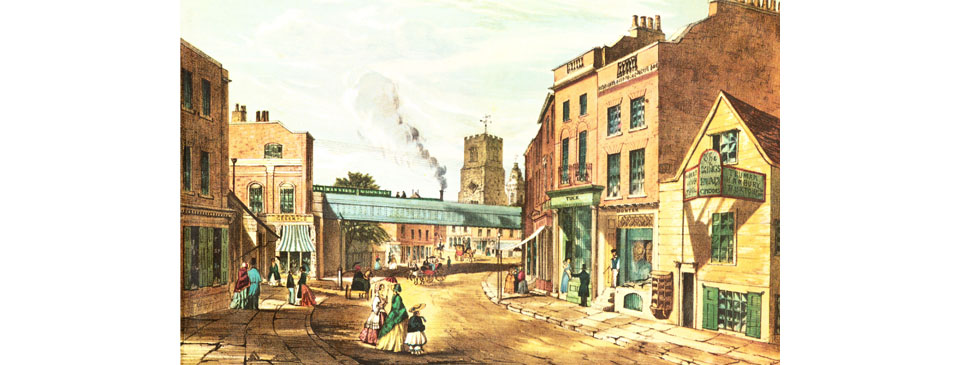In brief – London during the mid-19th century

A train from Camden passes over Mare Street, Hackney on the new North London Railway in this engraving from the early 1850s. The railway was built to provide a link between the London & Birmingham Railway at Chalk Farm and the East and West India Docks. The section through Hackney was completed in 1850 and the entire line opened in January 1852.
After the success of the Great Exhibition smaller exhibitions continued to be held in the following years to the south of the park. Prince Albert had the idea of creating a permanent ‘Museumland’. The exhibition’s organisers used some of their profits to buy eighty-seven acres of land in South Kensington, across from the former site of the Crystal Palace, to create a district of schools, colleges, museums and concert halls. The area was developed, creating what eventually became the Royal Albert Hall, the Natural History, Science and Victoria & Albert Museums, the Imperial College of Science & Technology and the Royal College of Music.
During the mid-century Leicester Square was firmly established as a place of entertainments. The Great Globe opened there in 1851 with a relief map of the world sculpted on the inside. Less successful was the Panopticon of Science and Art, opened in 1854 on the site of what is now the Odeon at Leicester Square.
As the metropolis grew in size, population and complexity a confusing number of bodies were responsible for the many aspects of its administration. It was yet another cholera outbreak in 1853-1854 that finally forced the government to consider more effective methods to deal with civic matters. The Metropolis Local Management Act of 1855 reorganised administration outside the City by creating local vestry Boards, based on individual or groups of parishes, along the lines of the Poor Law management. The Boards had new powers of administration and responsibilities within their area, such as health, street lighting and paving, with a need to raise money from their ratepayers and to control budgets. Importantly the Act also created the Metropolitan Board of Works. Taking over responsibility for London’s sewers, as well as street planning and other improvements, the MBW were to bring about much modernization of London in the second half of the 19th century.
< Go back to In Brief: London during the Age of Improvement or forward to In Brief: Late Victorian London >


